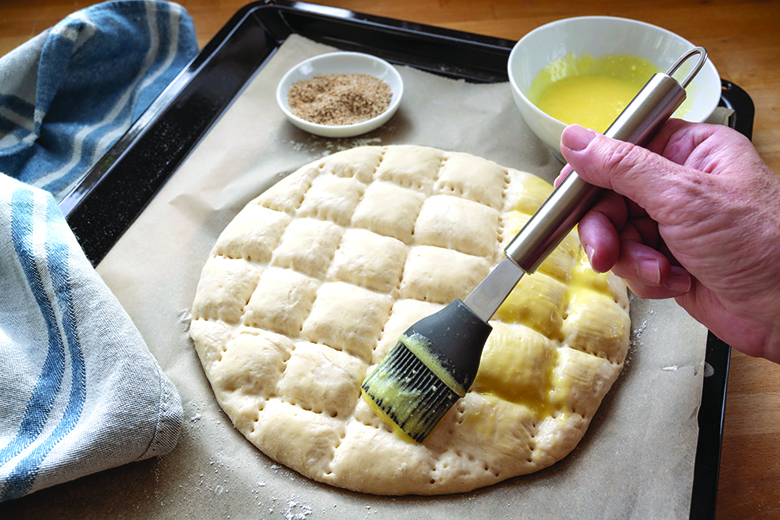
How to Clean a Pastry or Basting Brush: A Complete Guide
A pastry or basting brush is an essential tool in any kitchen, used for applying sauces, butter, and other liquids to enhance the flavor of baked goods and dishes. However, over time, these brushes can accumulate residue and become dirty, affecting their performance and compromising hygiene. Cleaning your pastry or basting brush regularly is crucial to maintain its functionality and ensure food safety.
In this comprehensive guide, we will walk you through the step-by-step process of cleaning a pastry or basting brush effectively. So, let’s get started and learn how to keep your brushes in pristine condition.
1. Understanding the Importance of Cleaning Pastry or Basting Brushes
Cleaning your pastry or basting brush is essential for several reasons. First and foremost, it ensures food safety by removing any bacteria or food particles that may have accumulated on the brush. Additionally, regular cleaning prevents cross-contamination between different ingredients, ensuring the flavors remain true and uncontaminated. Lastly, cleaning your brush helps to maintain its bristles’ integrity and performance, allowing for precise and even application of liquids.
2. Precautions Before Cleaning: Safety and Care Tips
Before you begin cleaning your pastry or basting brush, it’s important to take necessary precautions:
- Ensure that the brush is completely cool before cleaning to prevent any burns.
- If the brush has a wooden handle, avoid immersing it in water for extended periods to prevent damage.
- Check for any loose bristles and remove them before cleaning to avoid them ending up in your food.
By following these safety and care tips, you can protect both yourself and the longevity of your brush.
3. Removing Excess Residue: Initial Cleaning Steps
Before delving into the cleaning process, it’s essential to remove any excess residue from the brush. Start by gently tapping the brush against the side of a bowl or sink to dislodge any loose food particles or sauce. You can also use your fingers to remove larger pieces of debris. This step helps make the subsequent cleaning process more effective.
See more: How to Unclog a Kitchen Sink with a Garbage Disposal
4. Cleaning Methods: Different Approaches for Various Brush Types
The cleaning method for your pastry or basting brush will depend on its material and bristle type. Here are some common methods:
- Nylon Bristles: For brushes with nylon bristles, you can wash them with warm, soapy water. Use a mild dish soap and gently scrub the bristles with your fingers or a soft brush. Rinse thoroughly to remove any soap residue.
- Natural Bristles: Brushes with natural bristles, such as those made from boar hair, require extra care. Start by removing any excess residue as mentioned earlier. Then, dip the bristles in a mixture of warm water and a small amount of mild dish soap. Gently swish the brush in the solution, being careful not to bend or crush the bristles. Rinse thoroughly and reshape the bristles before drying.
- Silicone Bristles: Silicone bristles are generally easier to clean. You can wash them with warm, soapy water or place them in the dishwasher on the top rack. Ensure that the brush is dishwasher-safe before proceeding. After cleaning, rinse thoroughly to remove any soap or detergent residue.
5. Drying and Storing: Ensuring Proper Maintenance
Proper drying and storage are crucial for maintaining the longevity of your pastry or basting brush:
- After cleaning, gently squeeze out any excess water from the bristles.
- Allow the brush to air dry completely before storing to prevent the growth of mold or mildew.
- Store the brush in a clean and dry location, away from moisture and potential contaminants.
By following these steps, you can ensure that your brush remains clean, hygienic, and ready for future use.
FAQs
Q: Can I soak my pastry or basting brush in bleach for cleaning?
A: Soaking your brush in bleach is not recommended, as it can damage the bristles and compromise the brush’s integrity. Stick to gentle cleaning methods using warm, soapy water.
Q: How often should I clean my pastry or basting brush?
A: It’s best to clean your brush after each use to prevent any buildup or cross-contamination. Regular cleaning ensures food safety and maintains the brush’s performance.
Q: Can I use my pastry or basting brush in the dishwasher?
A: It depends on the brush’s material and whether it is labeled as dishwasher-safe. Silicone brushes are generally safe for the dishwasher’s top rack, but natural or nylon bristle brushes may require hand washing.
Q: How do I remove stubborn stains or residue from my brush?
A: For stubborn stains, you can soak the brush in a mixture of warm water and white vinegar for about 15 minutes. Then, gently scrub the bristles with a soft brush or toothbrush. Rinse thoroughly afterward.
Q: What should I do if my brush starts shedding bristles?
A: If your brush begins to shed bristles, it may be time to replace it. Loose bristles can be a hygiene concern and end up in your food.
Q: Are there any alternative cleaning methods for pastry or basting brushes?
A: Some alternative cleaning methods include using baking soda paste, hydrogen peroxide, or vinegar solutions. However, always refer to the brush’s manufacturer guidelines to ensure compatibility and prevent damage.
Conclusion
Keeping your pastry or basting brush clean is essential for maintaining food safety and ensuring optimal performance. By following the step-by-step guide provided in this article, you can effectively remove residue and maintain the brush’s integrity.
Remember to take necessary precautions, choose the appropriate cleaning method for your brush type, and prioritize proper drying and storage. With a clean and well-maintained brush, you can confidently add flavor and finesse to your culinary creations.